Last updated on June 23rd, 2024
54. Unexplained sounds have been heard in Ceres and Minard Hall of the North Dakota State University. Students believe it might be haunted because people died there.
55. A small public library in Harvey, North Dakota, is believed to be haunted. People claim that they saw mysterious flickering lights at the library.
56. The North Dakota state government owns a flour milling facility called the North Dakota Mill and Elevator Association. It is the only state-owned milling facility in the United States. The facility makes its bread mix, flour, and even pancakes. Residents can purchase these straight from the government.
57. In the early 1900s, a populist movement called the Non Partisan League passed anti-corporate laws that protected farmlands, built the largest milling facility in the US, and established a state-owned bank that shielded North Dakota from the 2008 crisis.
58. North Dakota boasts as the only state in the union with a bank of its own. It is called the Bank of North Dakota and has its headquarters in Bismarck. The bank did remarkably better than the larger banks during the 2007 recession, something that has had other states considering setting up their state-owned financial institutions.
59. Bismarck was renamed in 1873 in honor of the German Otto von Bismarck. It was done with hopes of attracting German investors to the state.
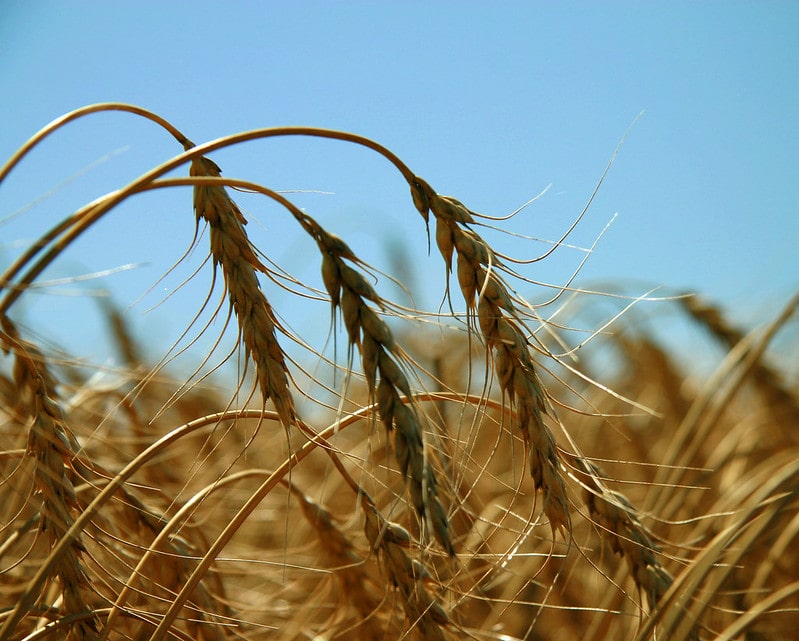
60. The state of North Dakota produces almost 50% of the country’s spring wheat. Wheat is produced in all 53 counties in North Dakota. It is also one of the leading producers of barley, oats, flaxseed, canola, durum wheat, lentils as well as edible beans. About half of all the cropland in the state is planted with this cereal grain.
61. The vast majority of the United States’ pasta is made using durum wheat that’s grown in North Dakota. The state has boasted of its ability to produce enough amounts to supply each person in the US with 93 lb. pasta per year.
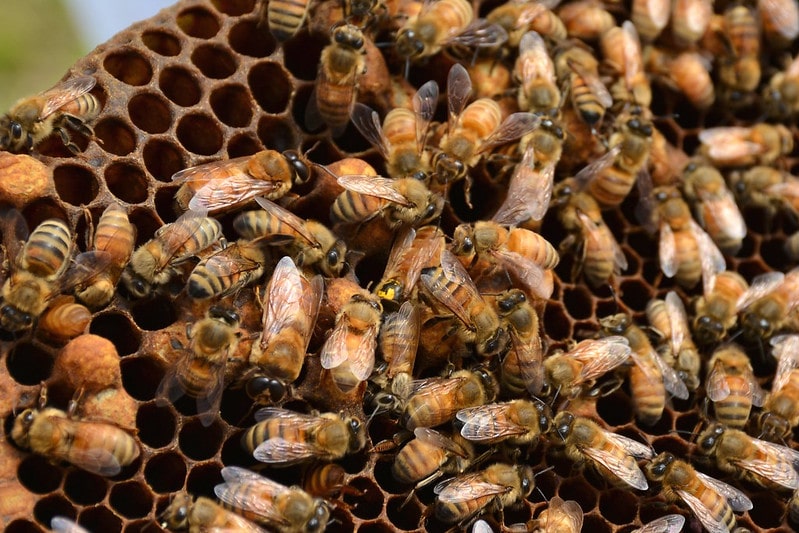
62. North Dakota is the leading producer of honey in the U.S., followed by South Dakota, California, Montana, and Florida.
63. The state produces 40 million gallons of milk each year from its 68 licensed dairy herds; and has 29,900 farms across 39.1 million acres. Milk is its official state beverage.
64. After Texas, North Dakota is the country’s second largest oil producing state.
65. North Dakota’s oil deposits were discovered in 1951 in the farm of Henry O. Bakken. Estimates of the oil reserve in the Bakken Formation range from 3 billion to 400 billion barrels. In 2012, the state was the second largest oil producer in the US.
66. North Dakota was a fur trade hub during the 19th century. Fort Union, which is today a national historic site, used to be an important stop for traders who were on stretches of Mississippi River. Tribes from the Northern Plains also travelled to Fort Union each spring for trading furs and buffalo for other goods. Between 1828 and 1867, it was reported that the Fort’s turnover in trade amounted to $100,000 each year.
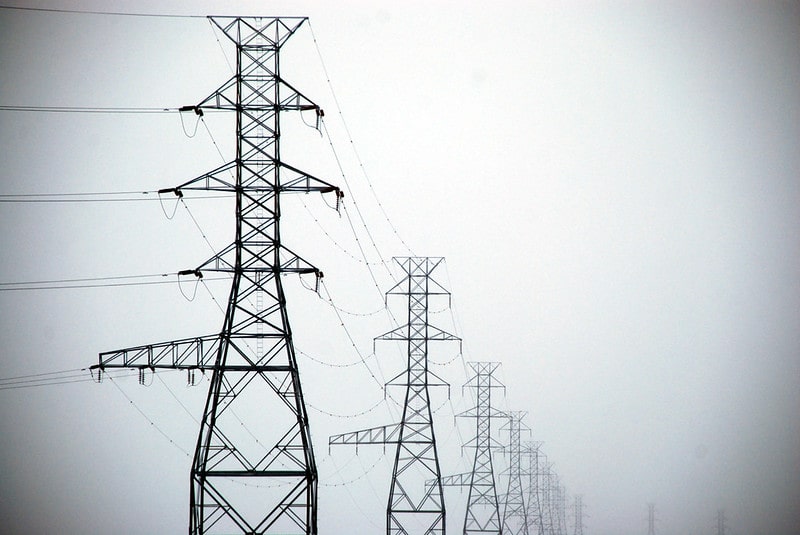
67. According to the NYtimes.com, North Dakota produces more electricity than is consumed in the state and about half is sent to its neighbours.
68. Another interesting fact about North Dakota is that that according to the Bureau of Labor Statistics, North Dakota has the second-lowest unemployment rate in the U.S. Vermont has the lowest of the pack.
69. The only riot in North Dakota that had to be quelled by the National Guard was, in fact, a spring break diversion where 2000-3000 students drove to Zap and drank lots of alcohol. They destroyed many buildings.
70. The First US Volunteer Cavalry, otherwise known as the “Roughriders”, were North Dakota cowboys who fought in the Spanish-American War. The name was used in tourism slogans and almost made its way to the license plates as well.
71. Another amazing fact about North Dakota is that the state law requires that most drugstores are owned by local pharmacists. This simply means you won’t find many national chains operating pharmacies here. North Dakota’s prescription drug prices are among the lowest in the country. There was an attempt in 2014 to change this law but even that failed. So, if you can’t see Walgreens, Rite Aid or CVS, you now know why.
72. There are more registered vehicles in North Dakota than people. For every 100 residents in this state, there are 118 cars. This statistic was reported in 2020.
73. North Dakota has some of the most expensive rentals in the nation. According to a 2014 study, one-bedroom in North Dakota’s Williston cost nearly $2,400 per month. This was even more expensive than a similar house in New York which rented for $1500. This can be attributed to gas and oil industry expansions, which has made towns such as Williston boomtowns. People flock to remote areas to look for high-paying jobs, raising demand for houses.
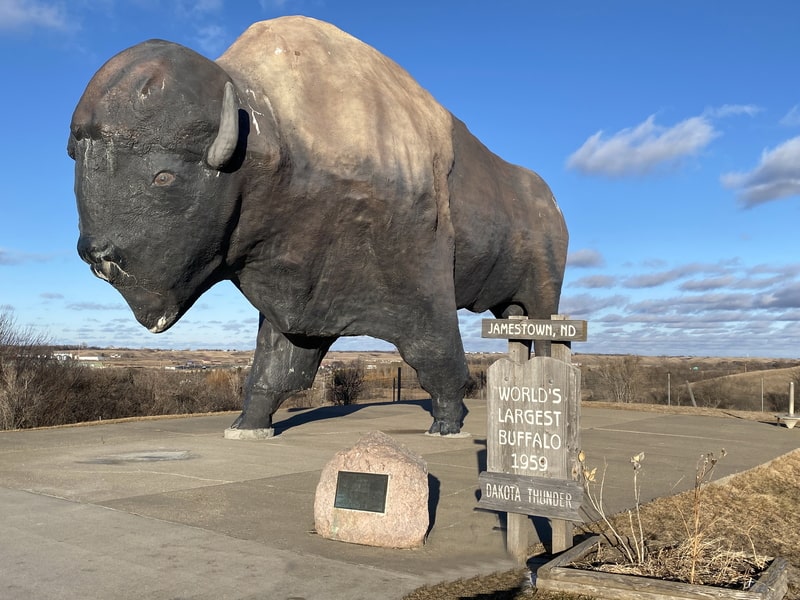
74. Drop by the Frontier Village to see the world’s largest buffalo monument, overlooking the city of Jamestown. It’s an impressive sight at 26 feet and 60 tons. Although completed in 1959, it only got its name in 2010 from a local contest: “Dakota Thunder”.
75. If you look at the contiguous United States, North Dakota is the coldest state based on average annual temperature. Alaska is the coldest of the 50 states.
76. North Dakota holds a yearly Potato Bowl. The event dates back to the year 1966 when the football coach of the University of North Dakota team organized a competition between them and Idaho State, a state which rivals North Dakota in potato production. The event has today expanded and includes potato pancake breakfasts, fry-eating contests, World’s Largest French Fry Feed.
77. The world’s largest hamburger was made in Rutland, North Dakota 1982. It weighed 3591 pounds, and 8,000 individuals were invited to the feast.
78. Until the year 2010, North Dakota’s 2063-feet TV broadcast tower (KVLY-TV Tower in Blanchard) was the world’s tallest man-made structure that can be ascended by a ladder or elevator. But the building is not usually considered when counting the tallest buildings because of the fact that guy-wires attached to the ground support the wires.
79. North Dakota currently holds the Guinness World Record for the biggest number of snow angels made at the same time in one place. 8962 people converged at the State Capitol Grounds and made snow angels on February 17, 2007. They smashed the record that was set the previous year at Michigan Technological University of 3,784 people.
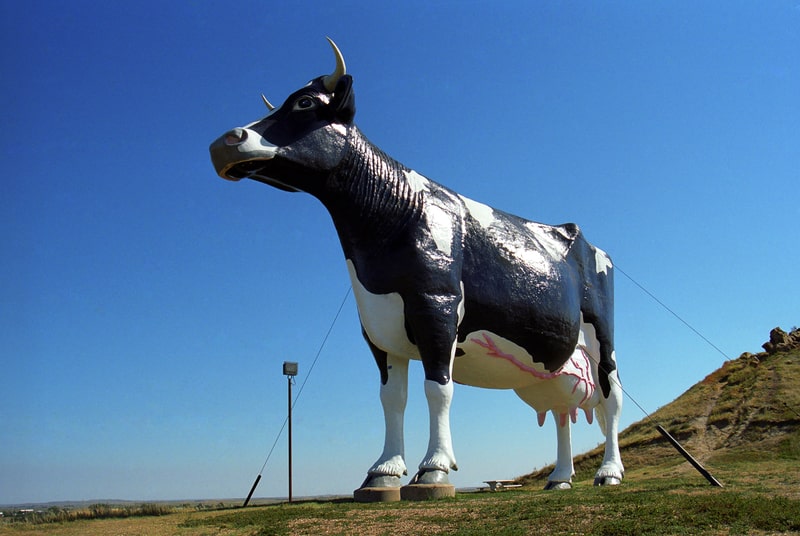
80. Cows are everywhere in North Dakota. However, Salem Sue is special. She’s 38 feet tall and 50 feet long, earning the title of the “World’s Largest Holstein Cow”. You’ll be able to see this legen-dairy sculpture from 5mi away.
81. North Dakota hosts the largest Scandinavian festival in North America. The Norsk Høstfest is attended by tens of thousands of people in Minot, North Dakota each year to mark the state’s Nordic Heritage. Immigrants from Nordic countries such as Iceland, Sweden, and Denmark trooped to the state in the late 19th century. In 1914, the land owned by Norwegians and their descendants stood at 20% of all the land in the state.
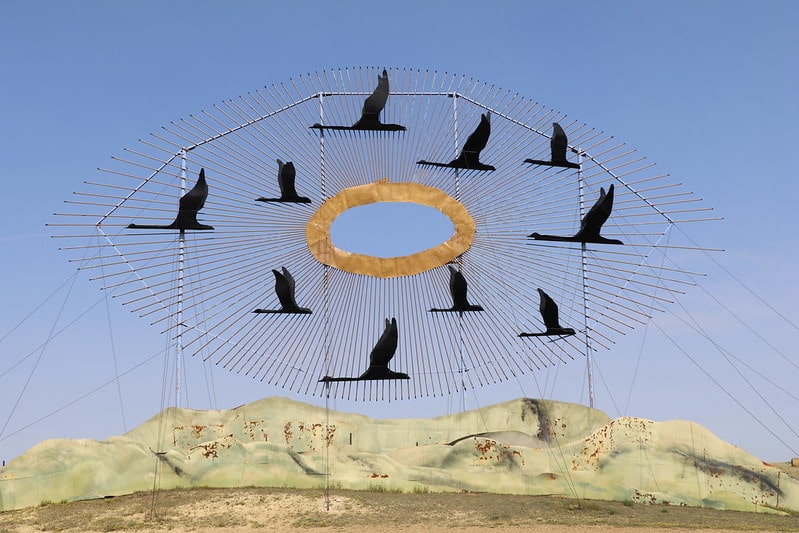
82. Geese in Flight, a North Dakotan highway Sculpture, currently holds the Guinness World Record for the largest metal sculpture. The sculpture, which was erected in 2001, is 154 feet long and 110 feet tall. It weighs 75 tons. It was constructed by Gary Greff, a retired school teacher.
83. North Dakota has the world’s biggest deposit of lignite, projected to last for up to 800 years. Lignite is a soft, moist sedimentary rock often called “brown coal” with 25-35% carbon content. It is mostly used for steam-electric power generation.
84. Hawaii and North Dakota might have something in common in terms of happiness, but the two states differ markedly on one aspect: unlike Hawaii, North Dakota is one of the American states that tourists are least likely to visit. On the contrary, it is a great place to live.
85. Lewis and Clark are reported to have spent more time in North Dakota than in any other state in the US. They also hooked up with Sacagawea outside of the not-yet-Bismarck. It is also in North Dakota that they encountered their first grizzly bears. It’s great they didn’t mix the two up because the dollar coin wouldn’t be the same as it is today.
86. North Dakota has played host to some famous movies which include Fargo (1995), Dakota (1945), and My Father’s Garden documentary (1996). However, none of the scenes in Fargo was filmed there. Besides, the movie was only loosely based on 2 true events and even these did not occur in North Dakota but Minnesota. But you can find the wood chipper used in that movie on display at Fargo-Moorhead Visitor Center.
Food facts — North Dakota
87. Among the North Dakota German and Russian residents, the Fleischkuekle is a popular dish. Also known as the little meat pie, it is a deep-fried meat-filled turnover.
88. It may not have originated here, but cactus bread is a well-liked dessert in North Dakota. It’s a cinnamon streusel with an icing swirl on top and sprinkled with sugar.
89. The Hot Beef Sandwich is another unique dish from North Dakota. It’s a toasted sandwich filled with shredded or sliced beef, cut in half with a pile of mashed potatoes between the halves, slathered with gravy.
90. A popular dish served at gatherings is Hotdish. It contains a scratch, vegetables, and meat. Everything is covered in a gravy or cream of mushroom soup.
91. It is not strange that the state fruit, the chokecherry, has many products flavored by it. Juices, soda, jam, and butter are some of the products flavored by it.
92. The popular Lefse is another of the North Dakota dishes most residents enjoy. It is a potato crepe made from potato, cream, butter, and flour with fillings of your choice.
93. Small dumplings filled with cheese, known as cheese buttons, are a snack North Dakotans are fond of. It is made from soft noodle dough and filled with cheese, salt, and onion.
94. Those who love fish will find walleye one of the tastiest dishes. You won’t regret trying it with anything else on the side.
95. The most famous dessert in North Dakota is none other than Chippers. It is a simple snack, a potato chip dipped in creamy chocolate.
96. A German dish introduced to North Dakota in 1880 is Kuchen. It is a sweet dough crust filled with thick custard and cut in wedges.
Must-See Places in North Dakota
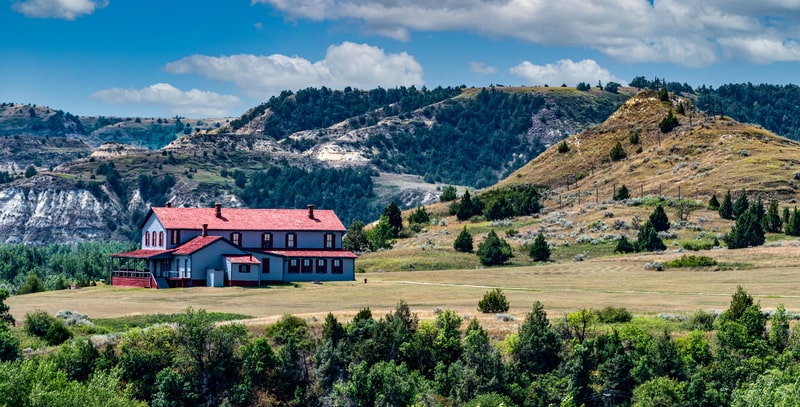
Notable People from North Dakota
Culture in North Dakota
10 largest cities in North Dakota
Fargo
Fargo is the largest city in North Dakota and is located on the Red River of the North which forms the border with Minnesota. With over 125,000 inhabitants it is the largest city in the state. It was founded in 1871 by the Northern Pacific Railway company where the rail line crossed the river.
Bismarck
Bismarck, North Dakota’s capital, is situated on the eastern side of the Missouri river. The city was founded in 1872 and originally named Edwinton (after Edwin L Johnson, a proponent of a transcontinental railway). Its name was changed to Bismarck in 1873 after the German chancellor Otto von Bismarck in a bid to attract investments from that country.
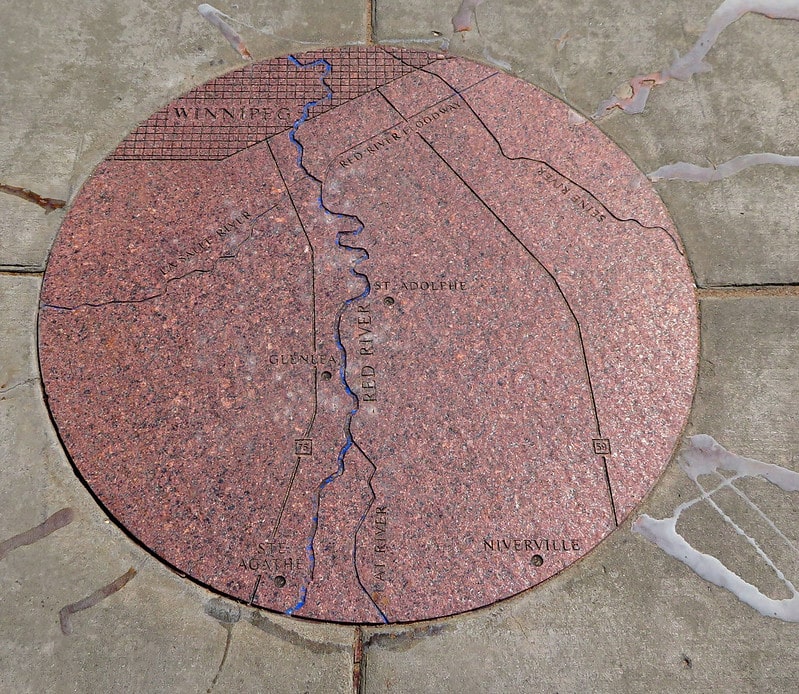
Grand Forks
The city of Grand Forks is located where the Red River of the North and Red Lake rivers meet. It was named by French trappers in the 18th century because of its location. It was permanently settled in 1870 and grew rapidly after 1880 when the Great Northern Railway arrived.
Minot
Minot is another town in North Dakota that owes its origin to the construction of the Great Northern Railway. It was established in 1886 and named in honour of Henry Davis Minot who was a noted investor in railroads. It was nicknamed ‘Magic City’ at the beginning of the 20th century because of its massive growth at the time.
West Fargo
West Fargo, established in 1926, is located 5 miles west of Fargo and is part of the Fargo-Moorhead metropolitan area. It is notable for having been a Tree City for over 30 years (based on Tree City USA requirements for urban forestry) and has been recognized as a Playful City by the Humana Foundation.
Williston
Williston, founded in 1887, started as an agricultural center but today its economics are driven by development of the oil industry due to its location on the Bakken formation. It is estimated that more than 150 million barrels of oil could be recovered from the shale located there.
Dickinson
Dickinson is notable as one of the fastest growing cities in the United States as a result of the North Dakota oil boom in shale oil. The city is known as ‘Queen City of the Prairies’ and is a gateway to the Theodore Roosevelt National Park and the greater American west.
Mandan
The city of Mandan was named after the indigenous people’s that had historically made the area their home. A Mandan Indian village at Crying Hill was recorded as early as 1738. In the 2010 census over 5% of the city’s inhabitants identified themselves as having Native American heritage.

Jamestown
Jamestown was established in 1871 when the Northern Pacific Railroad established a based where the railroad was to cross the James River. The city was named after Jamestown in Virginia by General Thomas Rosser.
Watford City
Watford City was established in 1914 when enterprising businessmen laid out the townsite and began selling plots within it in anticipation of the arrival of the first Great Northern Railroad train. Many of its inhabitants came from the nearby town of Schafer which subsequently became a ghost town.
About Life in North Dakota
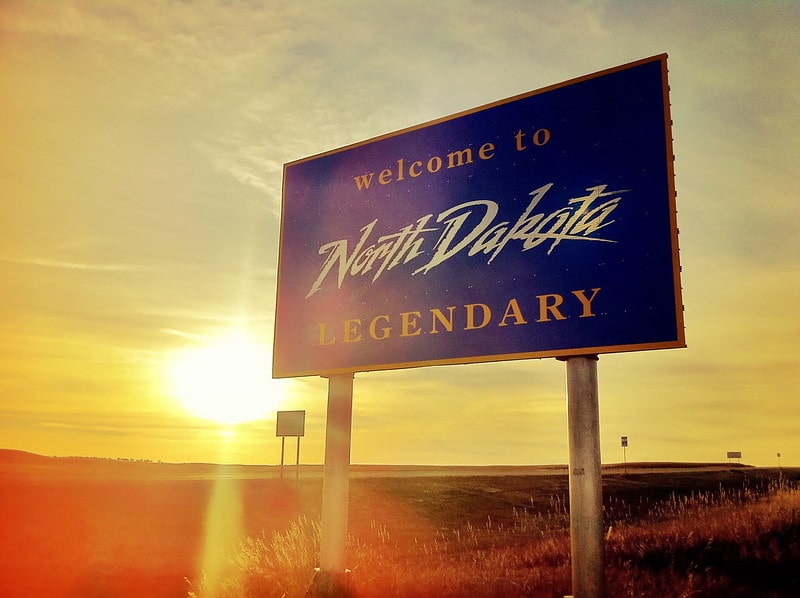
North Dakota has been nicknamed the ‘Legendary State’ because of the unique natural beauty of its prairie wilderness areas. As one of the least populated (and visited) states in the US it is also one of the most beautiful and features prominently in best quality of life rankings. With a strong sense of community and friendly locals it is also regarded as a desirable location for families with young children.
The state is one of the friendliest when it comes to paying tax to Uncle Sam as well, with low income taxes and local and sales taxes at less than 7%. North Dakota boasts some of the lowest unemployment rates in the US and is among the leading states in economic growth. Its main industries are in the areas of agriculture, oil and gas but it is also growing as a destination for manufacturing and technology companies.
North Dakota has a rich German and Norwegian immigrant history that, along with Native American influences, makes for a unique cuisine. While not forgetting mid-western classics such as hotdish and casseroles topped with tater tots, you can also enjoy German meat-filled pastries and potato dumpling soup. The state’s famous fast food chain, Kroll’s Diner, features these and more unique North Dakota treats.
North Dakota has a reputation for brutal weather with snow and cold a prominent feature. The state is reputed to have some of the wildest weather in the US with temperatures ranging from a high of 150F to -42F. During winter the temperature regularly drops below -20F and there can be long periods in the winter months when the temperature remains below freezing.
North Dakota is a place where Native Americans, explorers and immigrants have influenced the state’s history and culture. The Lewis and Clark Expedition passed through there and the state has may museums and historical sites that commemorate its history.
About State flag of North Dakota

1. History
A blue flag with the United States coats of arms was used by North Dakota in the late 19th century. After joining the Union in 1889, the state’s National Guard used a similar design. Colonel John H. Fraine, a veteran in the Philippines war, spearheaded efforts for the flag to be officially recognized as the state’s flag.
On 3rd March 1911, the flag was officially recognized and was adopted on 11th March 1911 by the legislative assembly of the state. The color was not exactly defined at the time. In 1943, legislation was passed to make the flag resemble the original troop banner of the state.
2. Who Designed It
Colonel John H. Fraine designed North Dakota’s flag. He made it to be an exact copy of the flag that was carried by the state’s troop contingent during the Philippine-American war.
3. How & When It Came Into Being
On 21st January 1921, Colonel Fraine who was a state representative at the time, introduced legislation H.B. No. 152 that designated the state flag of North Dakota. According to the legislation, the flag had to conform to the size, form, and color of the flag that was used by the North Dakota Infantry during the Spanish-American War in the Philippines.
4. What Does It Symbolize
North Dakota’s flag has a bald eagle that holds an olive branch; this symbolizes peace. The eagle has a ribbon on its mouth with Latin words that translate into “Many uniting into one.” This refers to the different states uniting into one county.
5. What Are the Colors of the Flag
People want to know about North Dakota flag colors. The background color is blue. The design at the center has several colors including brown, green, red, and gold. The bottom banner is red with a golden border and “North Dakota” is written in white.
North Dakota – Quick facts and state symbols
| State Abbreviation | ND |
|---|---|
| State Capital | Bismarck |
| Largest City | Fargo |
| State Size | Total (Land + Water): 70,700 sq miles; Land Only: 68,976 sq miles |
| Population | 796,568 (Estimate July 1, 2024 from United States Census Bureau) |
| Statehood | November 2, 1889 |
| State rank by population | 47th |
| State rank by date of formation | 39th |
| State rank by area | 19th |
| Number of Counties | 53 |
| Demonym | North Dakotan |
| Bordering States | Minnesota, Montana, South Dakota |
| Official Language | None |
| Highest Point | White Butte 3,508 ft (1069 m) |
| Lowest point | Red River of the North at Manitoba border 751 ft (229 m) |
| Length | 211 miles (340 km) |
| Width | 335 miles (539 km) |
| Governor | Kelly Armstrong (R) |
| Lieutenant Governor | Michelle Strinden (R) |
| Electoral Votes | 3 |
| State Motto | Liberty and union, now and forever, one and inseparable |
| State Nickname | Sioux State; Flickertail State; Peace Garden State; Rough Rider State |
| % Water | 2.4 |
| Famous people | Leslie Bibb (Actress) Angie Dickinson (Actress) Josh Duhamel (Actor) |
| State Bird | Western Meadowlark |
| State Fish | Northern pike |
| State Flower | Wild prairie rose |
| State Fossil | Teredo Petrified Wood |
| State Fruit | Chokecherry |
| State Grass | Western Wheatgrass |
| State Insect | Convergent Lady Beetle |
| State March | Flickertail March |
| State horse | Nokota Horse |
| State Tree | American Elm |
| Longitude | 96° 33′ W to 104° 03′ W |
| Latitude | 45° 56′ N to 49° 00′ N |
| Time Zone | Central Time Zone, Mountain Time Zone |
| Website | www.nd.gov |
| Area Codes | 701 |
| Table last updated | May 11, 2025 |
